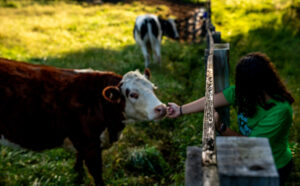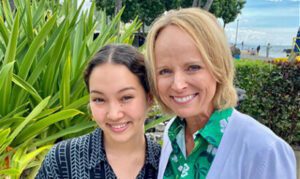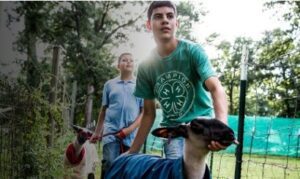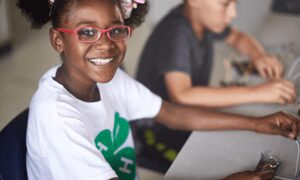In 4‑H, we recognize that the Hispanic community consists of various groups representing different Latin American countries contributing significantly to the American mosaic. As we continue to grow, we are committed to strengthening our understanding of all the diverse communities we serve. This Hispanic Heritage Month, 4‑H honors and celebrates the Hispanic/Latinx youth, professionals and families within our community.
As a part of our celebration, we learn from our community of leaders within the 4‑H and Cooperative Extension system who foster a welcoming and inclusive space for Hispanic youth and families. Meet Laura Valencia, Extension Agent II, 4‑H Youth Development, University of Florida IFAS Extension, Dr. Lupita Fabregas, Director, Missouri 4‑H Center for Youth Development, and Liliana Vega, 4‑H Youth Development Advisor, University of California.
Laura Valencia (LV): As a 4‑H agent with UF/IFAS Extension Osceola County, my goal is to ensure our county’s diverse youth population has equitable access to the 4‑H youth development program. We accomplished that by providing a wide range of culturally relevant opportunities to our community (Osceola County is 55% Hispanic/Latino). For instance, Juntos 4‑H is a program that helps Latino youth in grades 8 to 12 and their families gain the knowledge and skills they need to bridge the gap between high school and higher education. Additionally, 4‑H Soccer for Success uses a holistic approach that looks at the child and the community to address the many barriers that prevent them from reaching their full potential. Lastly, 4‑H is improving the Osceola County community by helping children establish healthy habits and critical life skills by making these opportunities more accessible.
Lupita Fabregas (LF): In Missouri, we designed a strategy to engage new audiences—a road map. A holistic multilevel approach with specific actions taken by our team to create a culture of inclusion into their Extension programing. Those actions include: reviewing policies and procedures; marketing campaigns; redesigning job descriptions; redefining effort levels and specific growth objectives; selecting an Intercultural Competence framework to improve academic and staff intercultural competence; inclusion of the term ‘parity’ to reach new audiences; and selecting areas around the state with a larger Latino population. We also develop and grow programs like Soccer for Success and Juntos 4‑H to engage Latino communities. Lastly, we focus efforts on writing grants to support engaging new audiences while accepting the challenge of building an inclusive and engaging culture.
Liliana Vega (LVega): In San Luis Obispo/Santa Barbara County, we create culturally relevant and responsive youth programs for Latinx youth and families. This includes partnering with local community organizations to make youth programs are accessible and culturally appropriate to Latinx families. We also look for ways to bring the program to Latinx families rather than expecting them to come to us or come to a program if it is not inclusive of their needs. Lastly, we recognize that 4‑H can and should look different to meet the needs of Latinx youth and families to foster positive youth development and support a positive racial-ethnic identity.
LV: As a Youth Development Extension Agent, I play a crucial role in helping our youth feel like they belong, not just in our program but in their community. I know first-hand the difference creating a sense of belonging can make in a child’s life. When you belong, you feel safe. Today, amid national conversations about equity and inclusion, more than ever, youth need to know they are cared about by others and feel a sense of connection. Participating in experiences like 4‑H creates fellowship, gives the opportunity to feel physically and emotionally safe, and helps youth thrive. LF: Culture is who we are and affects all aspects of our lives, from the food we eat to the kind of programs we would like to join. Latinos like me need to see our culture reflected in programs like 4‑H. From examples of programming that foster and appreciate our cultural values to welcoming communities that embrace our culture with respect and appreciation. LVega: In all bodies of youth development research, research indicates the need to express care and foster a sense of belonging. For Latinx families, this includes welcoming their whole identities, including their culture, cultural values and customs, and racial and ethnic identities. For youth of color, developing and fostering a positive racial/ethnic identity is critical. The more we can help Latinx youth feel valued, respected, and welcomed, the more we ensure they have a positive sense of self, thus leading to positive youth development.
















